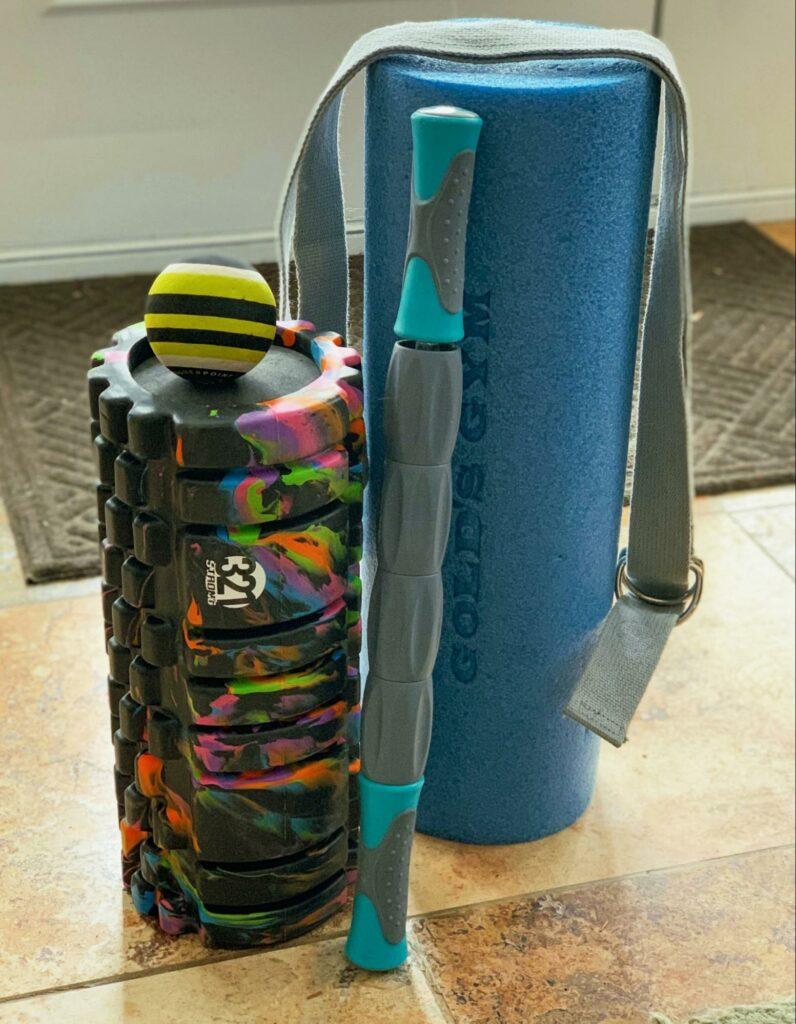Running is accessible and cheap, comparatively. There’s not much to maintain or replace in your gear closet, with the exception of a good pair of shoes and a few solid layers if you want to run in the elements. There’s no pass required. You can do it alone, with your dog, with another person, or with an entire pack of people. While it takes some getting used to, you can run all year long, as long as you’re willing and prepared.
It seems simple… maybe you’ve tried to get into it, but just can’t. Maybe you have a goal to run your first half marathon—or maybe you’re finally trying to break through the half marathon distance and run your first 26.2.
After my 15-year competitive soccer career came to an end in college, I picked up running. I started to run because I wanted to, not because I had to. However, even now, my motivation for running ebbs and flows. Depending on the season and if I’m training for a race, I run somewhere between 15-30 miles/week, give or take a few miles.
I’ll be the first to admit, running takes a toll on your body and can be a mental challenge, too. I’m not an expert, but I have years and years of experimenting under my belt. I’ve discovered what works for me, and what keeps me motivated to keep running and feeling good.
Here are 13.1 tips for training for your next big race—especially if you’re considering a marathon. And note: I’m certainly no running coach, doctor, or expert. So, take everything I say with a grain of salt, and consult your doctor if you feel injured or ill.
1. Constant hydration
Dehydration can ruin any run, from 3 miles to 30. It can even make you feel groggy and more exhausted on your cross train and rest days.  Remember, even if you run in the cold or through the winter, you still sweat. So make sure to replenish, and try not to wait until you’re thirsty to drink water. Make it a habit.
Remember, even if you run in the cold or through the winter, you still sweat. So make sure to replenish, and try not to wait until you’re thirsty to drink water. Make it a habit.
I’ve found that I drink more water when it’s room temperature or even warm. If you’re at work or heading to class, replace that fourth cup of coffee with a Nalgene full of hot water. Chances are, it’ll leave you feeling more energetic and with a better chance at ditching that little headache that’s been creeping in.
Drink as much as you can, especially as you start to increase your miles—at least 80 ounces per day—a gallon (128 oz) if you can swing it.
2. Fuel your body with whole foods
Food is a hot topic. Just like water, food can affect your runs—for better or worse. Exactly what you eat is up to you. Everyone is different, from how long and what you eat before a long run, to what you eat the night before, and the week leading up to a long run or race.

 Pro tip? Replace processed foods and cook at home. Shove as many whole foods into your diet as possible—all the greens, bell peppers, and fruit. If you have a meal of chicken and rice, why not throw in a side salad? Hit on all your food groups for a balanced and colorful meal. As you refine your diet and experiment with what fuels you, you’ll start to feel the difference in your runs.
Pro tip? Replace processed foods and cook at home. Shove as many whole foods into your diet as possible—all the greens, bell peppers, and fruit. If you have a meal of chicken and rice, why not throw in a side salad? Hit on all your food groups for a balanced and colorful meal. As you refine your diet and experiment with what fuels you, you’ll start to feel the difference in your runs.
If I’m up early and running long distances, I’ll typically eat a toasted whole wheat English muffin, topped with all-natural peanut butter and half a banana, sliced. If it’s a lazy weekend and I’m heading out late and have some time to digest, I’ll usually cook up 2-3 scrambled eggs, spinach/arugula, and bell peppers.
I don’t eat before short runs, which I consider anything under 10 miles.
3. Get enough sleep
I need eight hours, and I can feel it in my runs when I haven’t gotten enough sleep, especially the night before a long run. A consistent lack of sleep can send you into exhaustion, which you are likely already prone to if you’re really ramping up your running.
Everyone is different. Find out what your magic number of hours of sleep is for you to feel well-rested. Some people only need six, while others might need nine or ten hours. If you realize you aren’t getting enough sleep, reflect on your nighttime habits, maybe put down the phone at a reasonable hour, or resist bringing Netflix to bed if it keeps you up.
4. Experiment on shorter runs
Don’t try something new on long runs. You don’t want to have hours and miles to go if your shirt is rubbing, or you’re getting blisters. Test out everything new on your short runs, from socks, to shirts, shorts, shoes, packs, pre-run meals, and mid-run fueling, etc. Warm up and cool down, your body will thank you for it.
- Warm up: This is important. You don’t want to injure yourself because you went out for a run with tight muscles. On long run Saturdays, I try to give myself some extra time in the morning, but mostly I just walk around my house while I’m eating my English muffin and sipping on my coffee to warm up my muscles, and then do some light stretching in the kitchen, while I’m brushing my teeth, etc.
- Cool down: Stretch, stretch, stretch. I cannot emphasize this enough, this helps you prevent injury, soreness, and lactic acid buildup. As soon as your run is over, stretch for 20 minutes if you have the time. Invest in a foam roller and a trigger point ball. When I get home from a run, I change my clothes and immediately start my stretch and roll session. I’ve realized that I’m more likely to do it longer if I’m in clean clothes—save the shower for later. If you’re brave, go for the ice bath after long runs. It’s a great recovery option. Add some Epsom salt to a tub of cold water with 1-2 bags of ice. I usually do it in my swimsuit, wrap a towel around my shoulders, wear a beanie, have a hot cup of something (coffee, tea, water), and set up an episode of The Office. You should sit in the bath for around 10 minutes.
5. If you skip a run, just get back to it
Life happens. Maybe you’re sick or nursing an injury. Maybe you’re on vacation, or it’s a powder day. Whatever the case, if you miss a run, just jump back into it as soon as you can.
I wouldn’t recommend skipping your long runs regularly or pushing them out too far, but don’t be afraid to shuffle your schedule around each week. You don’t need to freak out if you miss one of your mid-week runs. The lesson here is to be flexible and don’t be too hard on yourself. If you put in the work regularly, you won’t suddenly be totally out of shape. When you’re sick or injured, while it might be hard, the rest can be better longterm. Don’t push too hard, or be stubborn about missing a run. Better to miss one run than lengthen an illness or exacerbate an injury. Sure, for a week you might feel a little behind, but within a week or two back to running, you’ll forget you ever took a break.
One of the best lessons I’ve learned over the years is to not let your training program prevent you from enjoying your life or preventing you from maintaining healthy mental and physical wellbeing.
6. It’s normal to feel burnt out
So, even though I said it’s ok to miss a run every now and then, it’s also important to know that you might feel burnt out. You might feel run down, bored, or dreading your runs. Training for half and full marathons can be time consuming and exhausting. Don’t quit just because you’re not as stoked as you were a month ago. It’s normal to feel this way—look for ways to spice things up again. Run a new route, listen to a new podcast. Try running intervals or mixing in some new cross training into your weeks.
It can be hard to tell, but when you’re dreading the run, try to know the difference between really needing a break or day off, and when you just don’t feel motivated to go. Push through those unmotivated days, sometimes they can produce some of the best runs.

7. A bad run is just a bad run
If you’re training for a half or full marathon, you’ll probably run 2-5 days a week (depending on your training program/schedule). That’s a lot of opportunity for some bad runs. Maybe you dropped your phone and shatter the screen while trying to change the song (guilty) two miles in. Some runs you’ll feel sluggish from a long week, or maybe you had that extra beer last night that isn’t sitting well. Maybe you realize you didn’t drink enough water. Or maybe you did everything right this week, and it’s just a bad run.
They happen. Don’t dwell on it. If every run was a good one, maybe more people would do it. The bad runs make us more grateful for the good ones. Use them as motivation. I even stopped having expectations for how my runs would go. Some days I thought it was going to be great, and they were bad. And some days I thought it would suck, and it was great. Either way, just go out, accept the run you’re having, ride it out, and then look ahead to the next one.
8. Strength train
Cross training should be a critical component of your training plan, and I’ve learned that strength training makes a positive difference in my running. I’ve trained for some races with and without strength training and now I won’t train without it.
I’ve found I feel stronger in my runs and that I experience fewer aches, pains, and injuries.
9. Treat yo’ yourself

Learn to treat yo’ self. I think this boils down to having a healthy self-care relationship. This might look like indulging in that post-run donut with coffee or the beer you’ve been craving. But you don’t have to default to food-related rewards. Maybe it’s a hot bath, an extra hour of sleep on Sunday, or another episode instead of doing the dishes.
I’ve learned that pairing my runs with something else I enjoy creates a positive association with running, which helps me push through the motivation lows.
10. Don’t be afraid of the weather or the dark
Nothing makes you feel more like a badass than running when everyone else is curled up inside with a blanket. If you have the right gear, you can endure almost any weather. I’ve grown more and more comfortable with running in all weather, and running in the dark—I always take my dog.
If you’re ready to dive in, then invest in a light yet breathable rain shell, some warm shirts, a vest, a headlamp, and reflectors. When it’s snowy and icy out, I’ll take to the roads with my trail running shoes.
If you’re going out in the snow or ice, however, be careful. The roads can be slick, so you might need to slow down. These kinds of runs won’t be your tempo run or PR.
11. Befriend the treadmill
I hate the treadmill and refuse to run anything longer than six miles. To the people who can and will run 13+ miles on the treadmill, good for you. I’d rather face the elements than run on the treadmill for long runs.
 However, if I really don’t want to run outside—maybe the air is bad, or it’s just way too icy—then I’ll turn to the treadmill. I rarely just trot on the treadmill. I’ll tempo run or work in some hill and sprinting intervals. There are a lot of great apps and resources out there for how to mix up your treadmill runs.
However, if I really don’t want to run outside—maybe the air is bad, or it’s just way too icy—then I’ll turn to the treadmill. I rarely just trot on the treadmill. I’ll tempo run or work in some hill and sprinting intervals. There are a lot of great apps and resources out there for how to mix up your treadmill runs.
12. Music? Podcasts? Nothing?
I think it’s important to be flexible in this area. You never know when your phone might die, or maybe you’d grown accustomed to running with music and then turns out your race is 10 miles through a canyon with no cell service.
I’ve learned to run both with and without entertainment. I head out based on how I’m feeling. If I’ve had a loud and busy day, I’ll run unplugged and listen to the sounds of my breath and my feet on the ground, taking advantage of the meditative elements of running.
Some races and long runs, I will start out with an hour-long podcast, then turn to music after that to carry me home or over the finish line.
13.1
Have fun, don’t take it too seriously!


